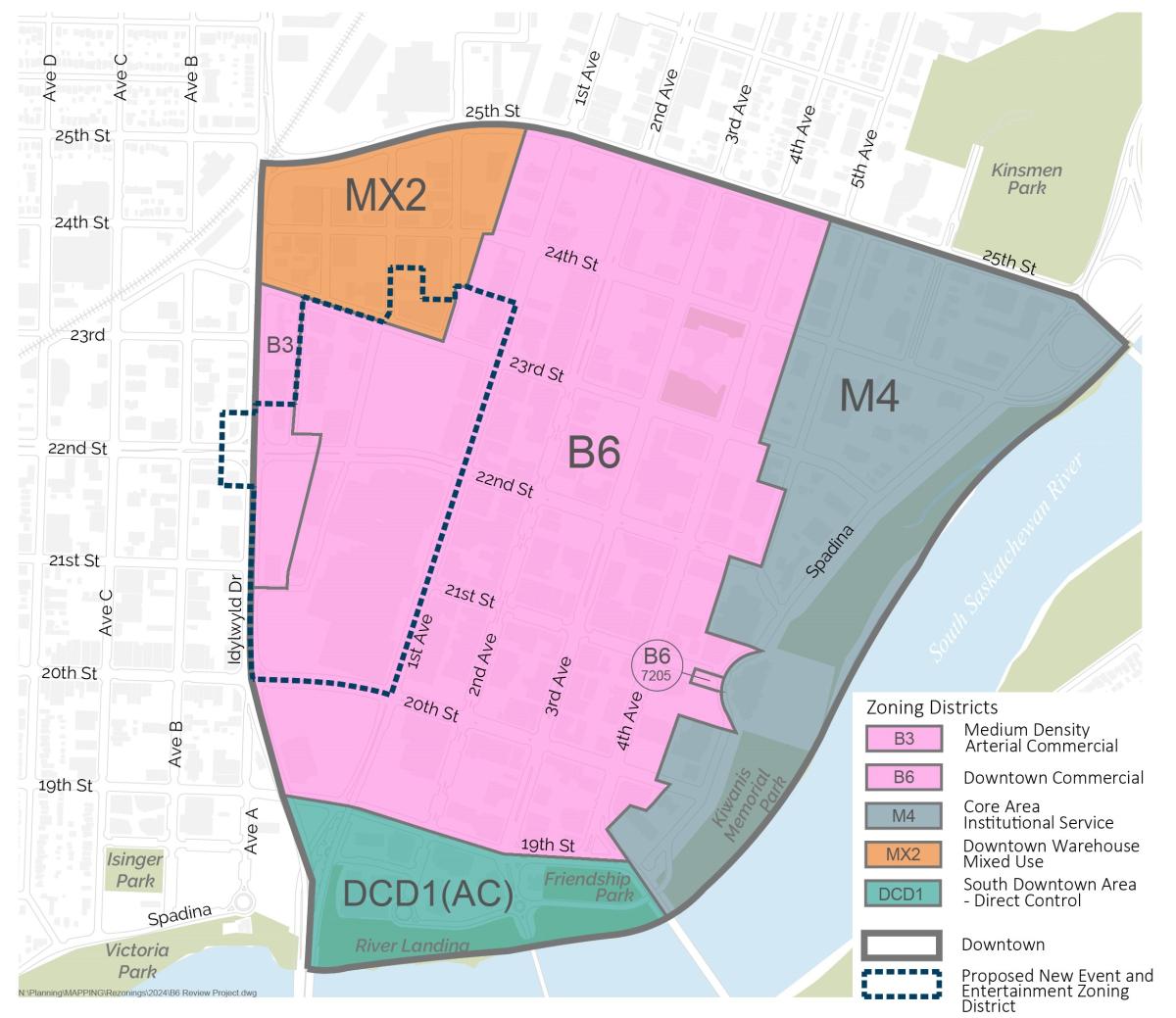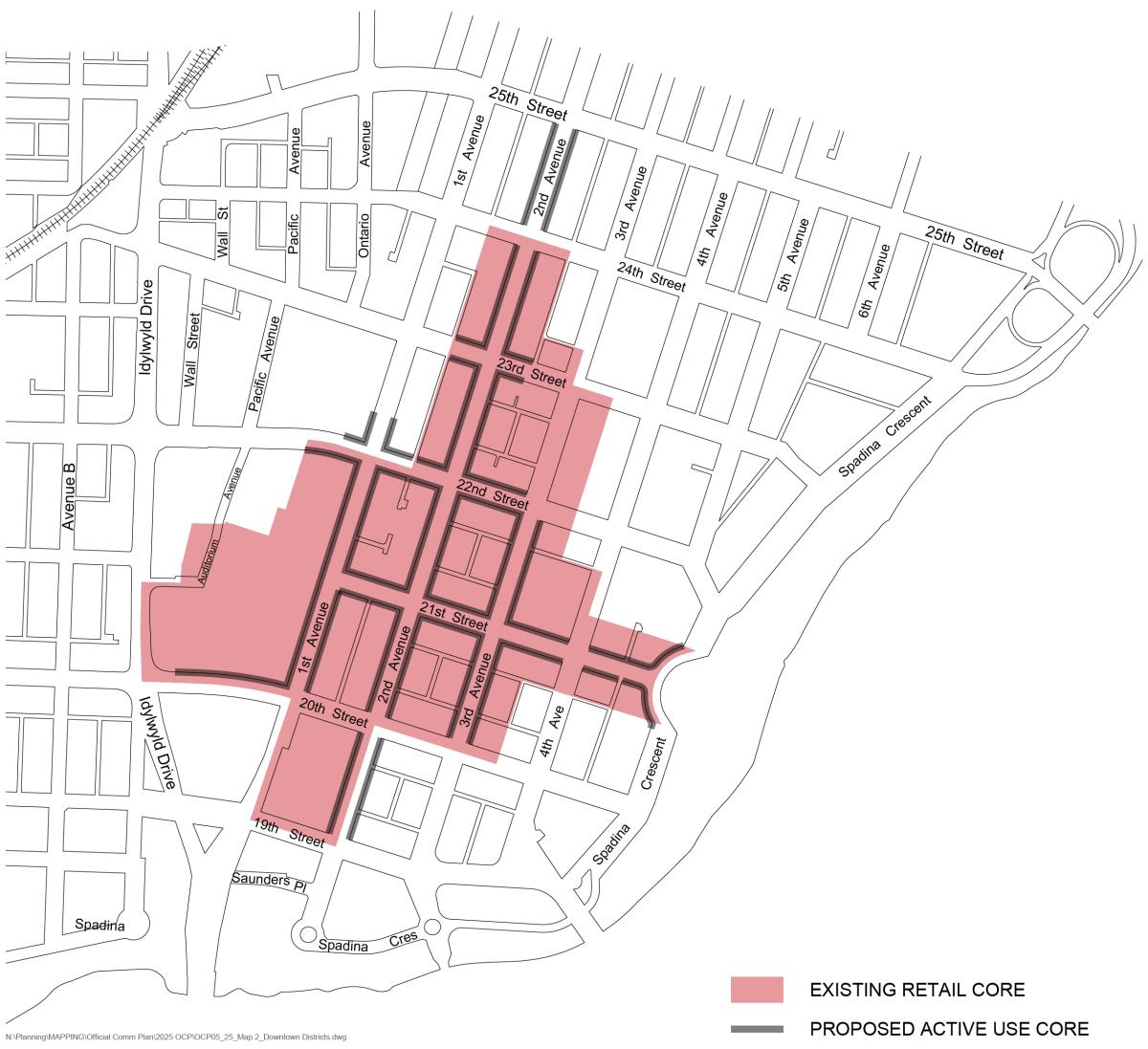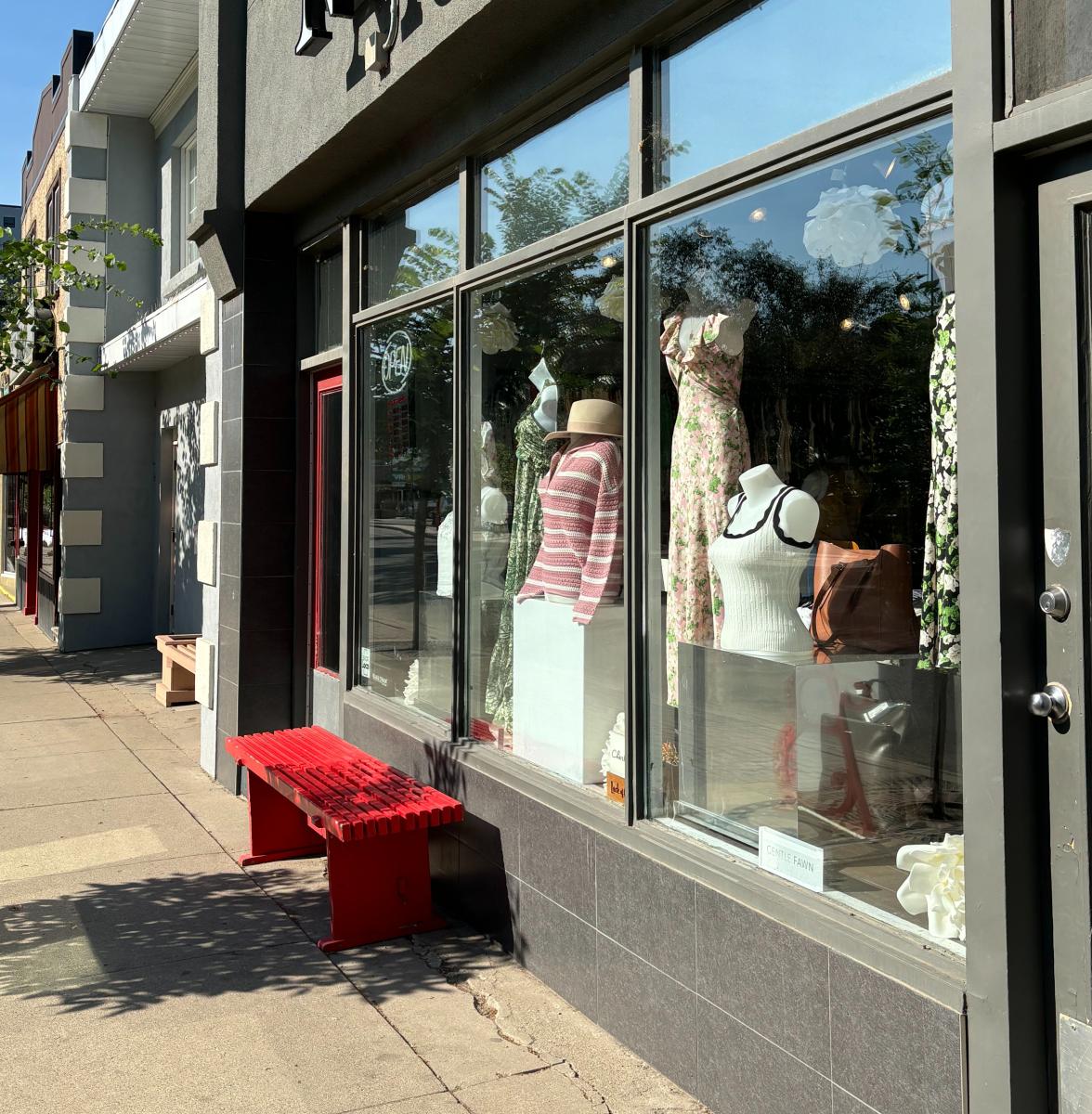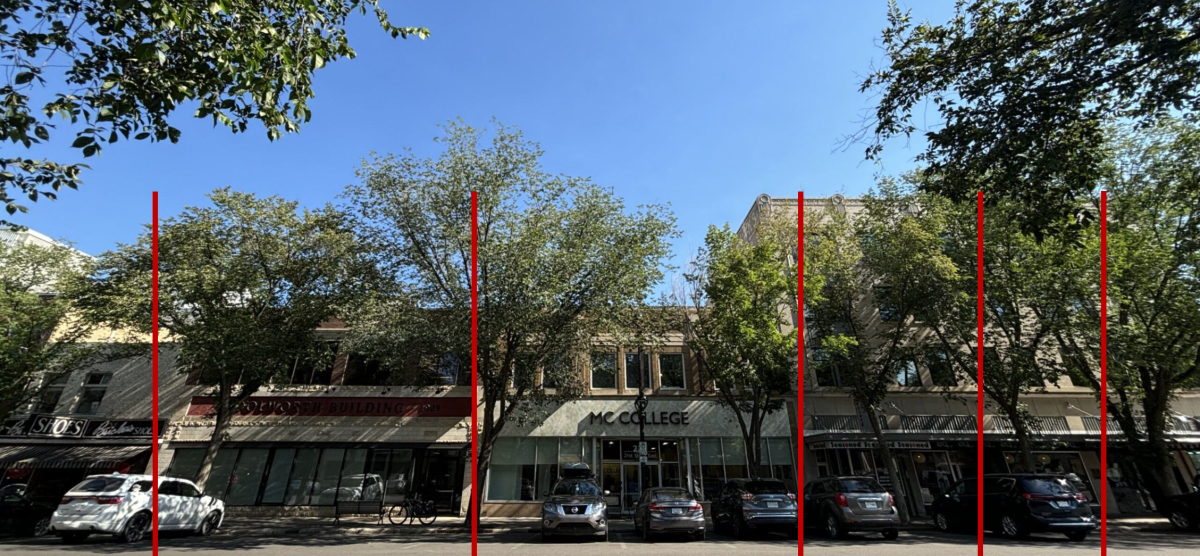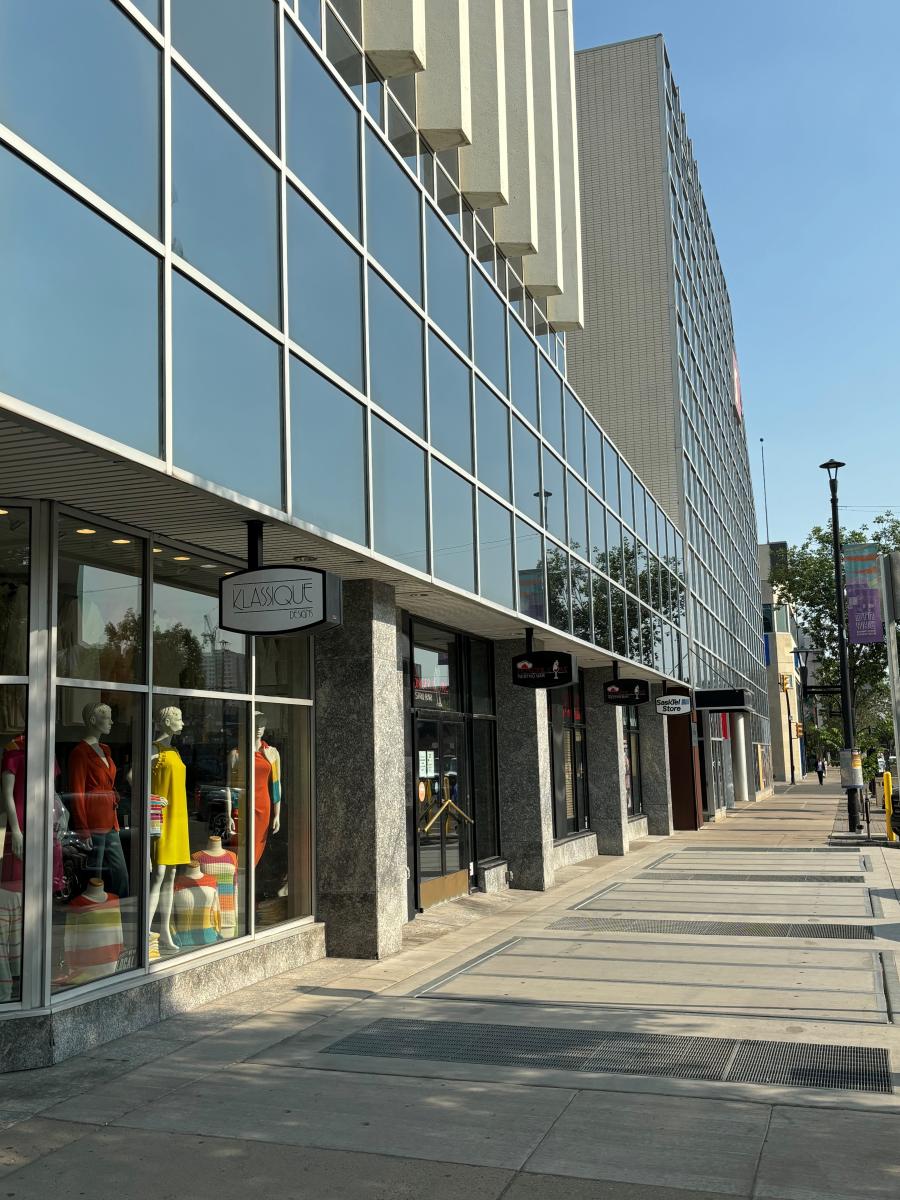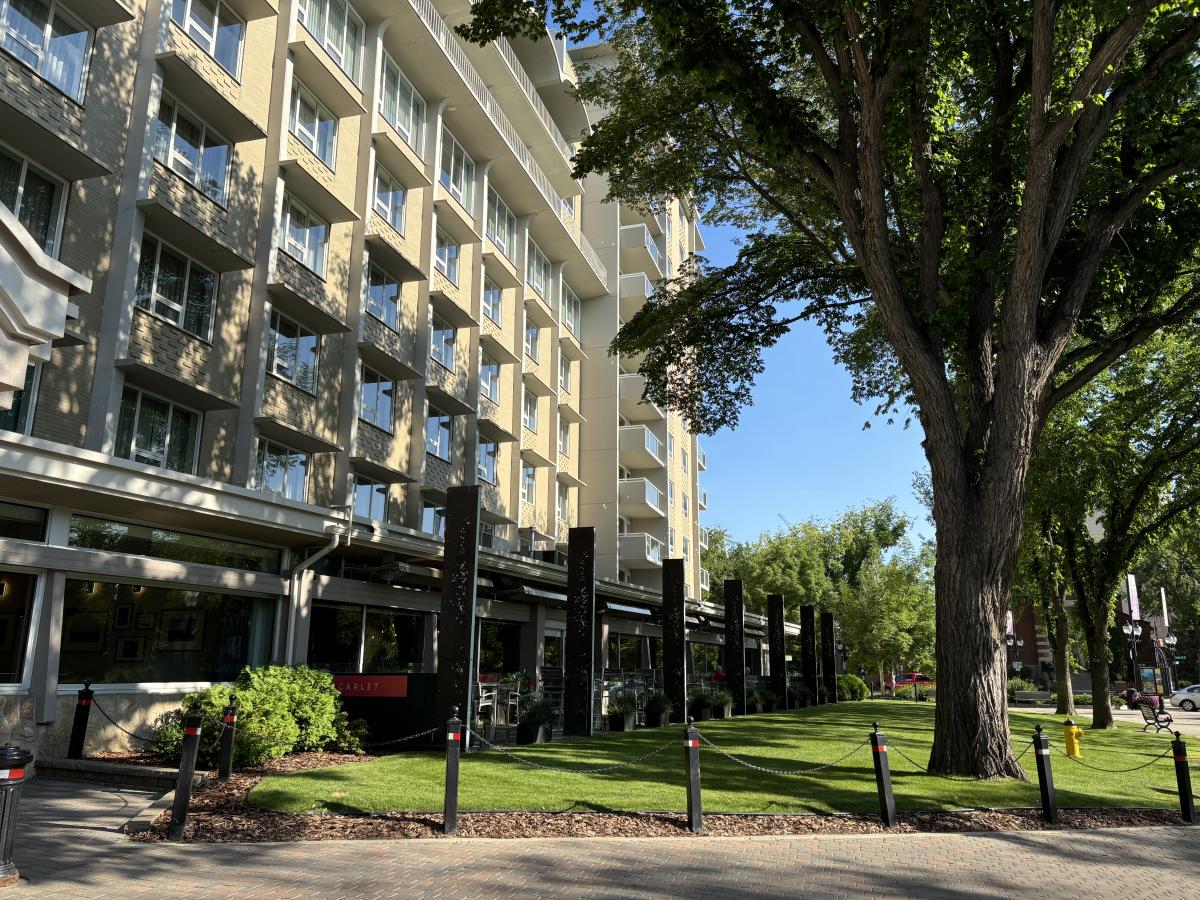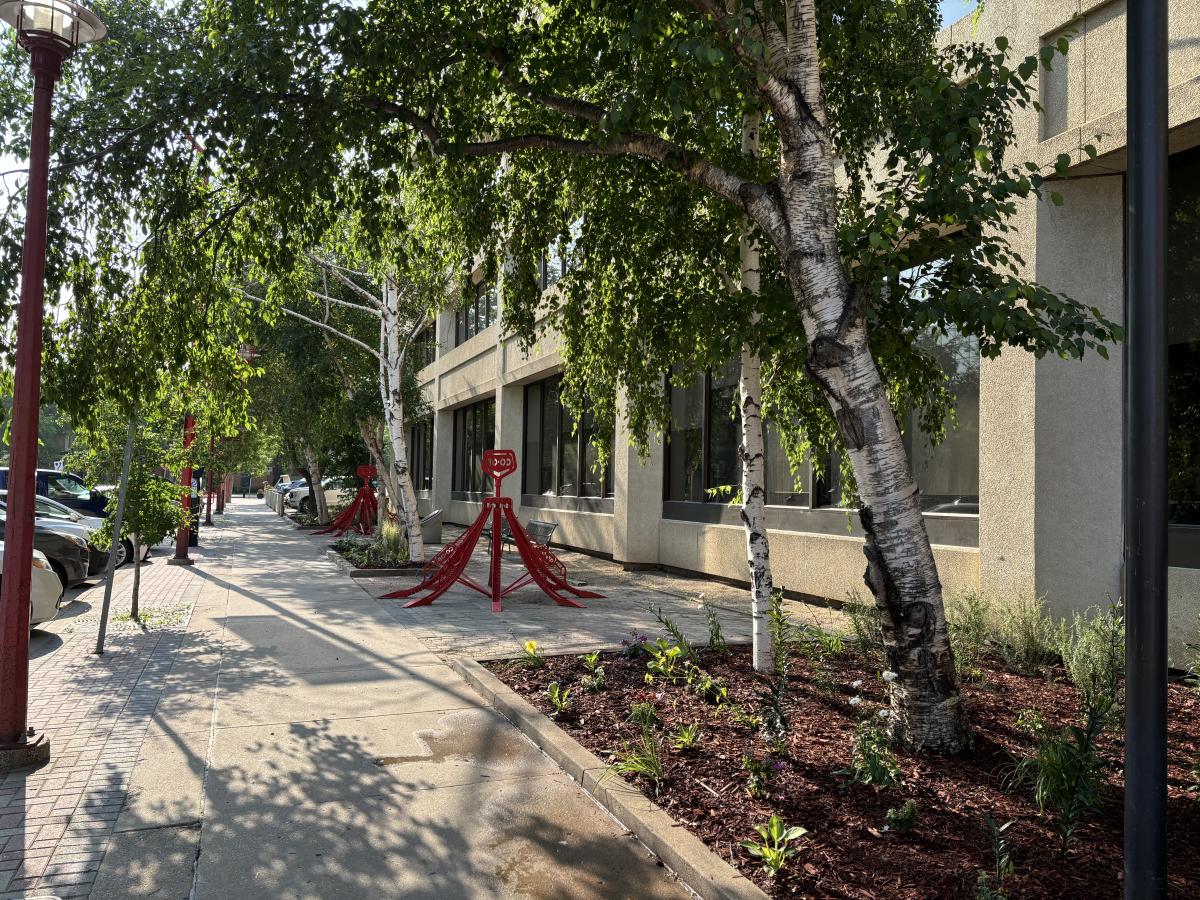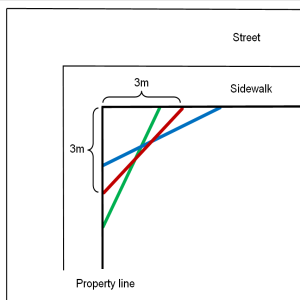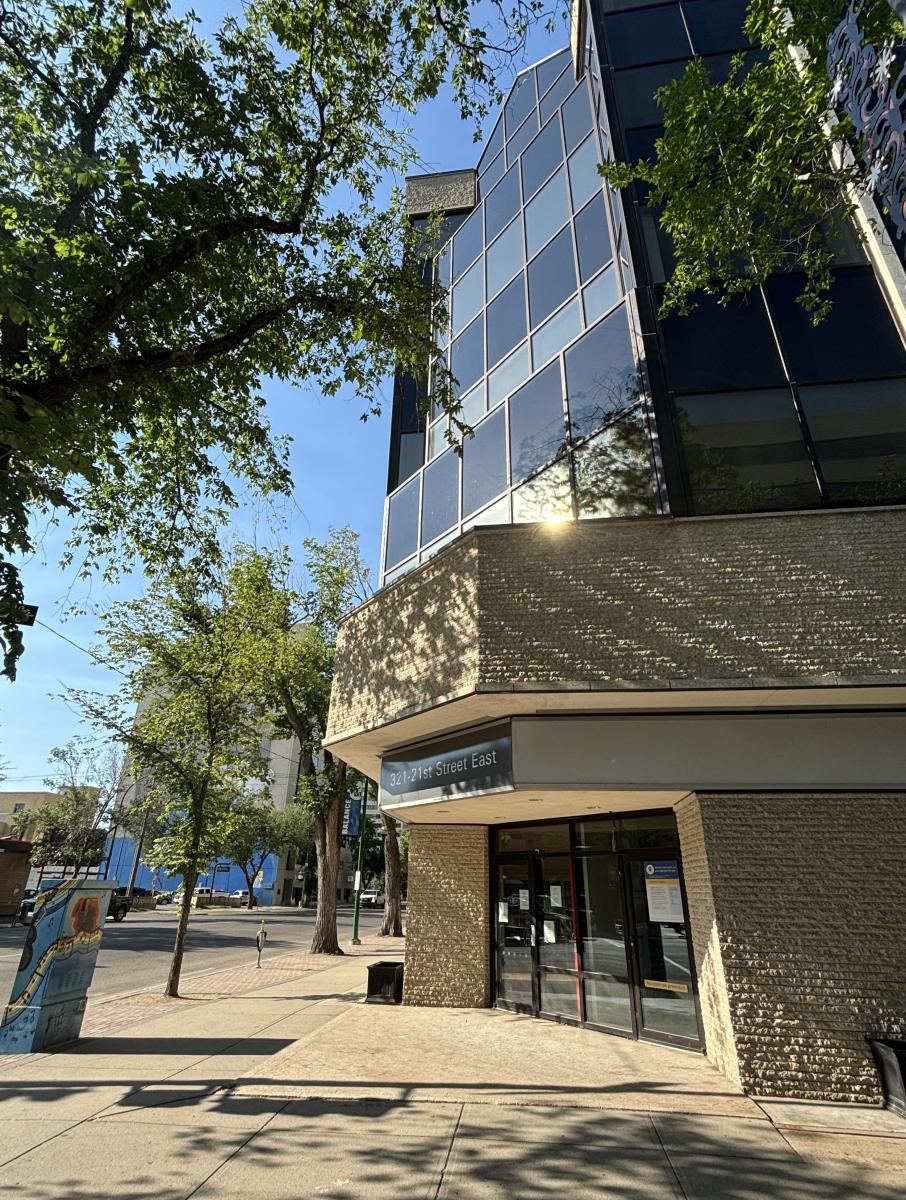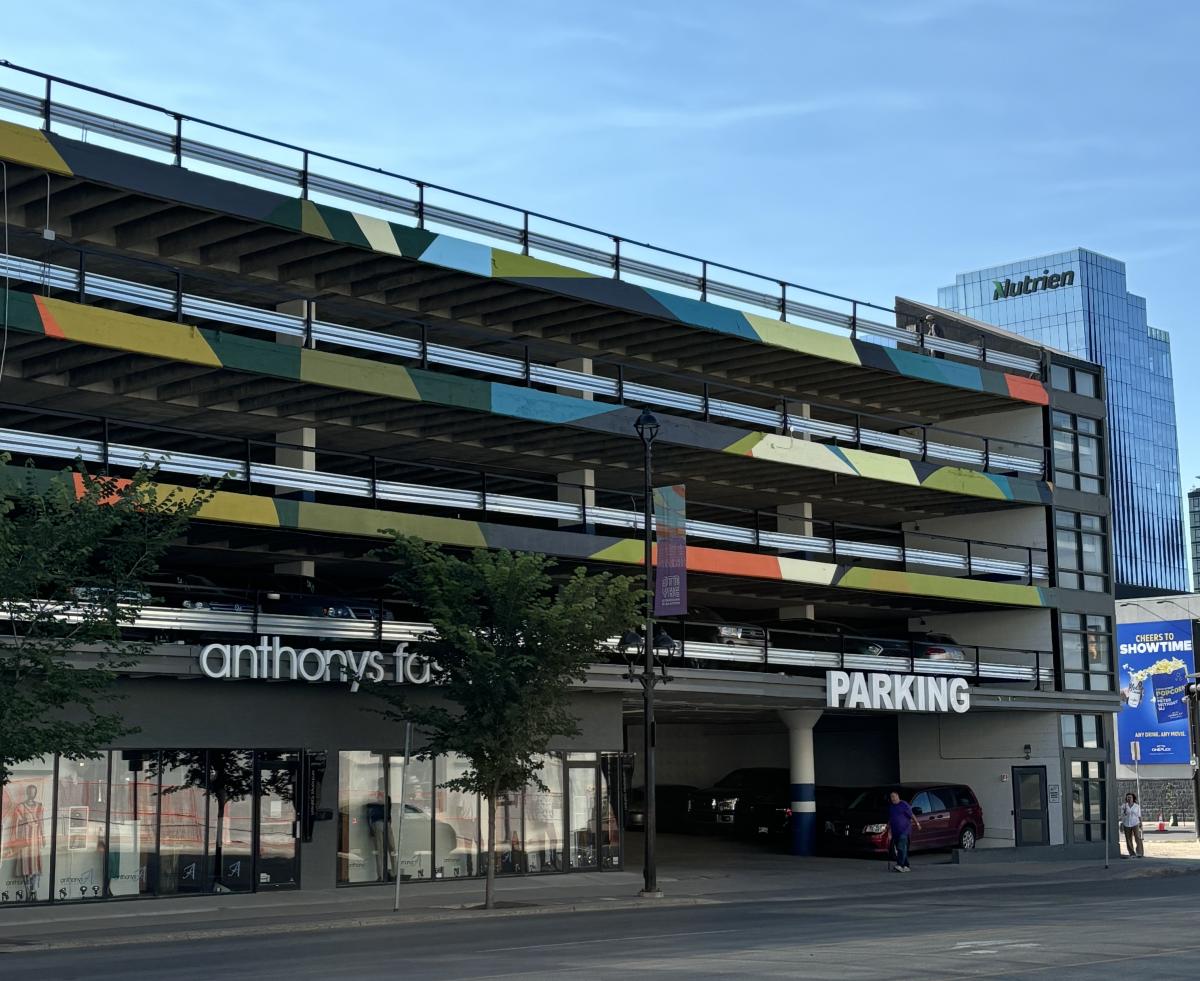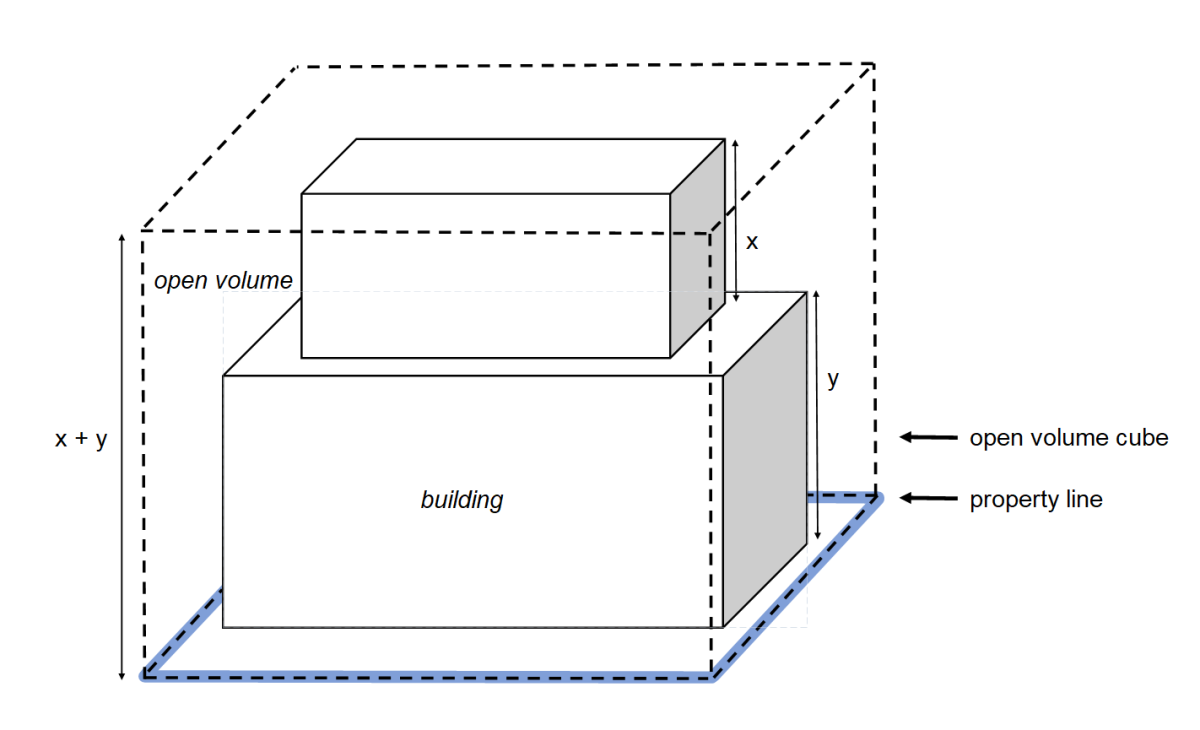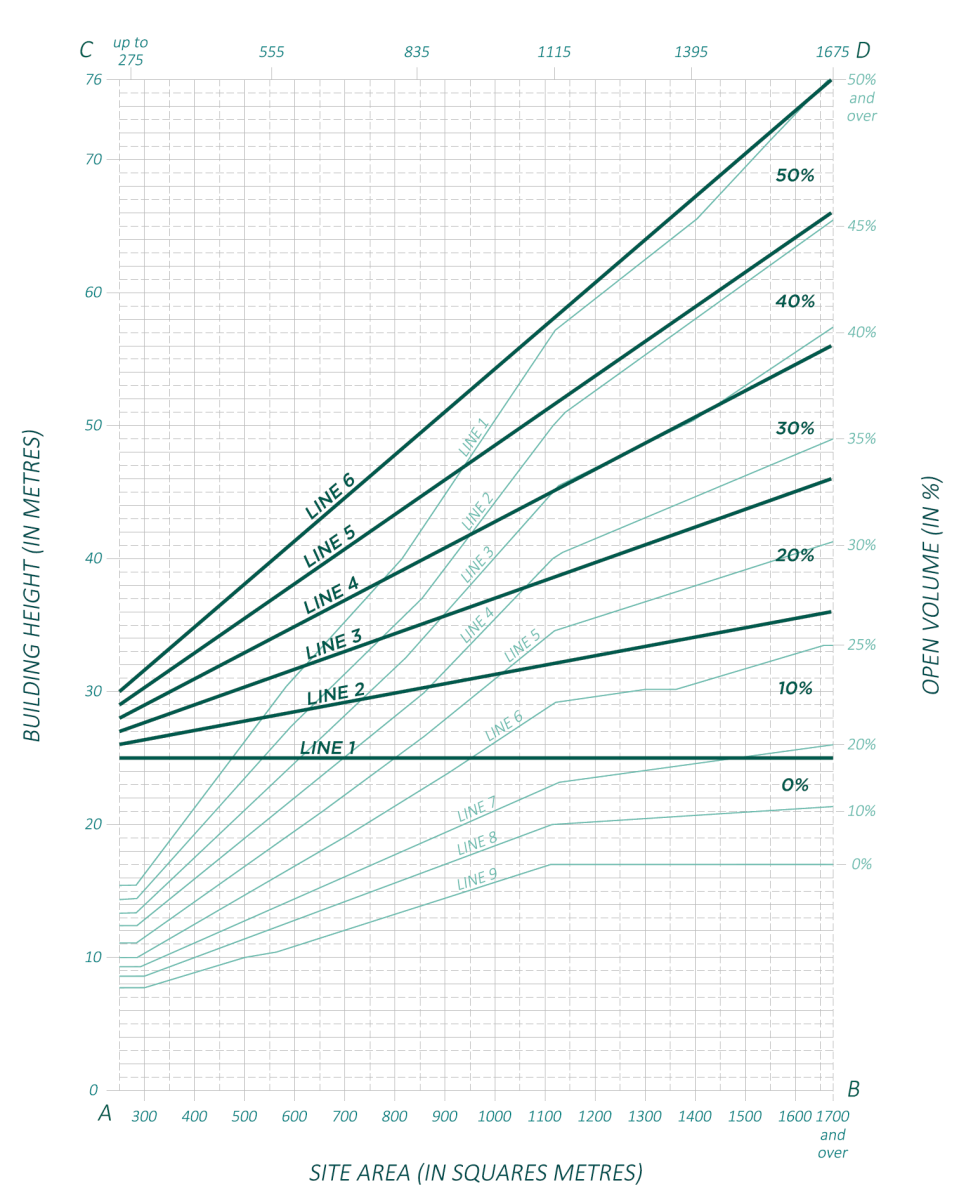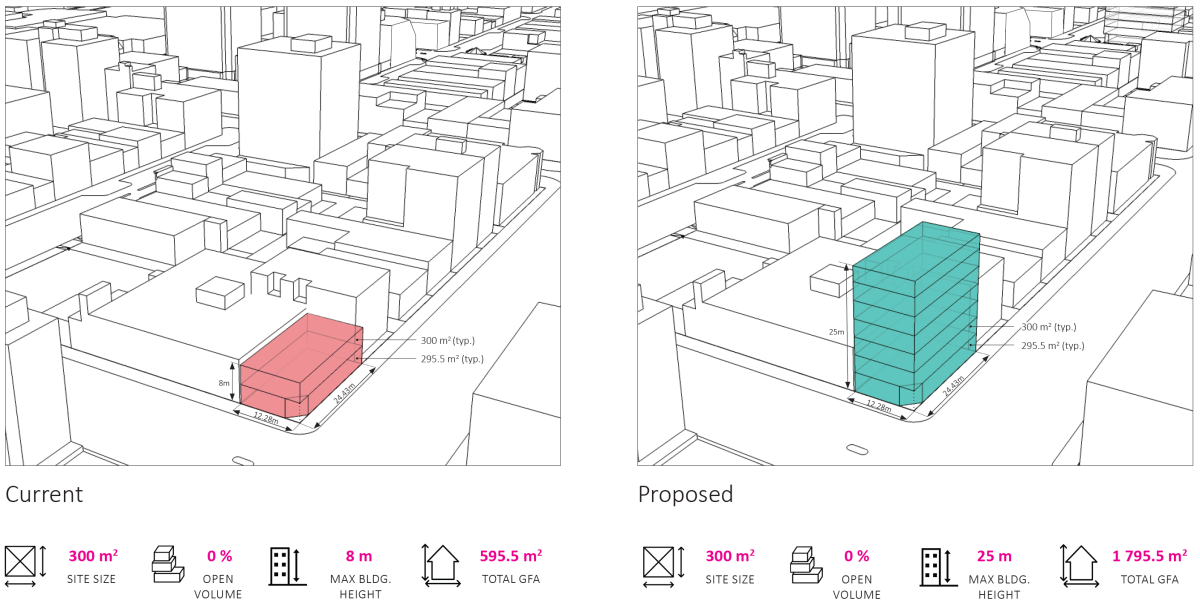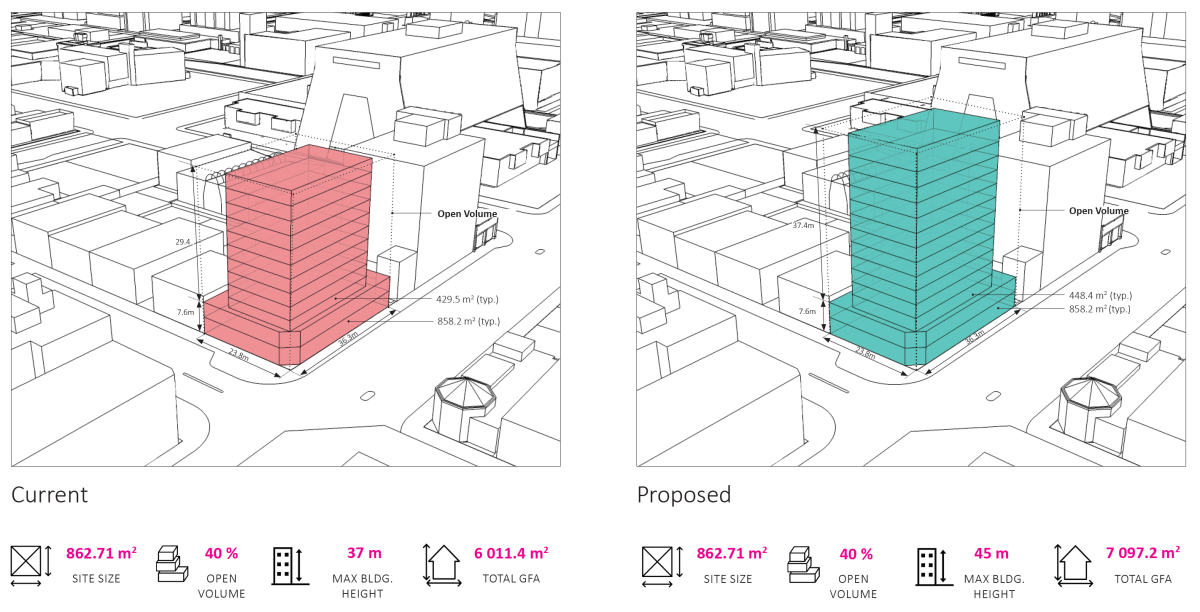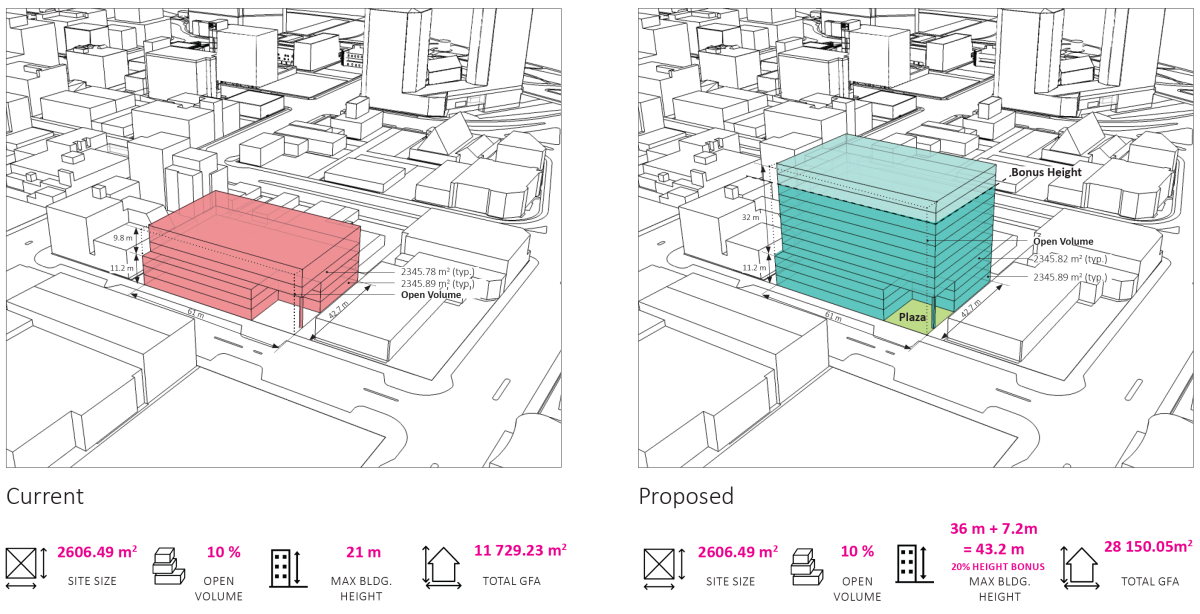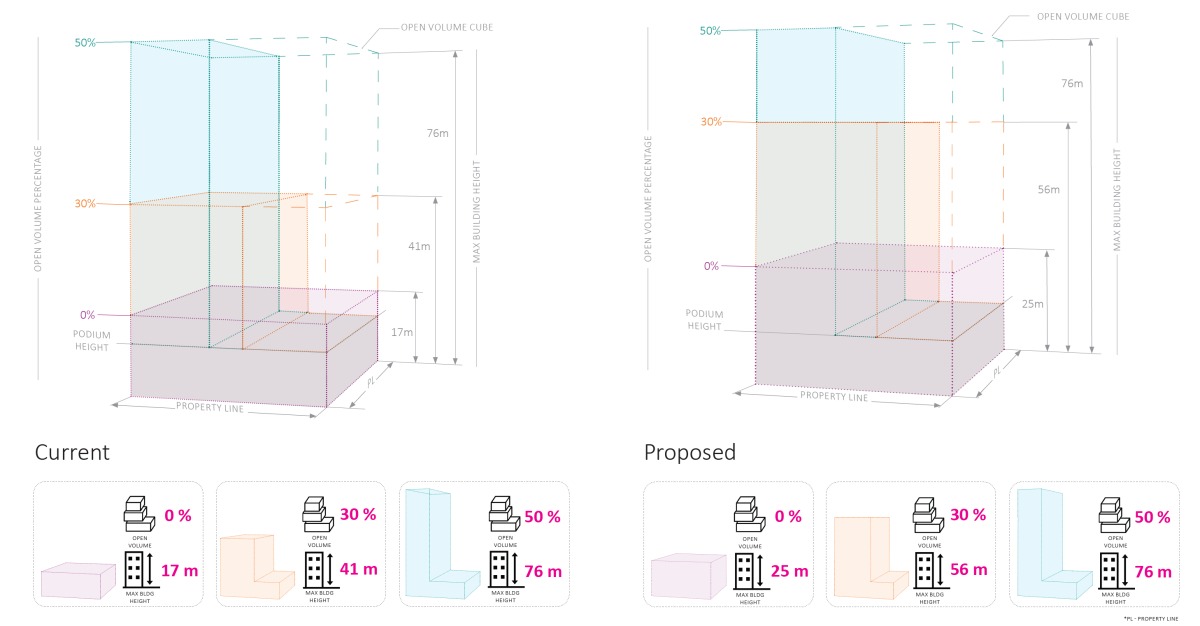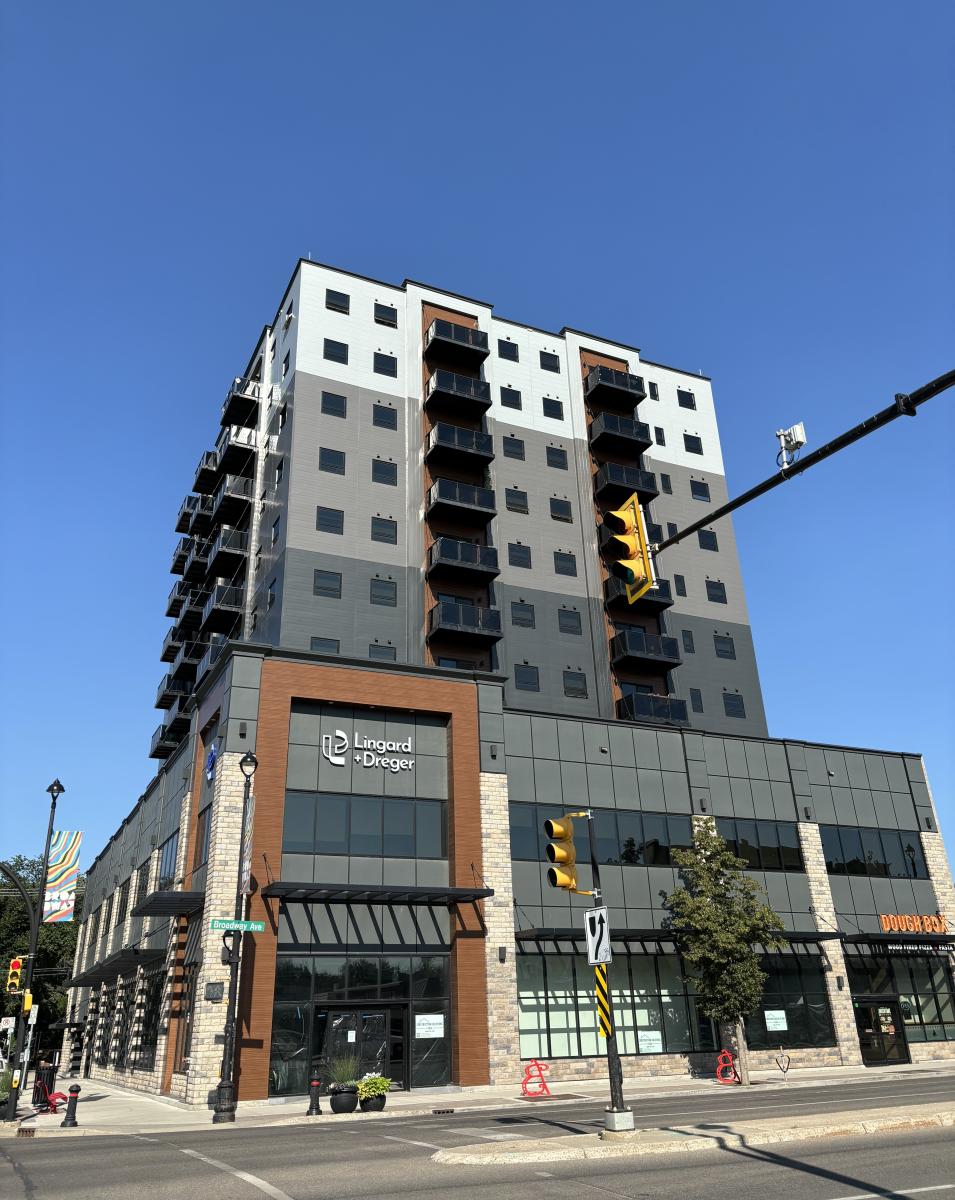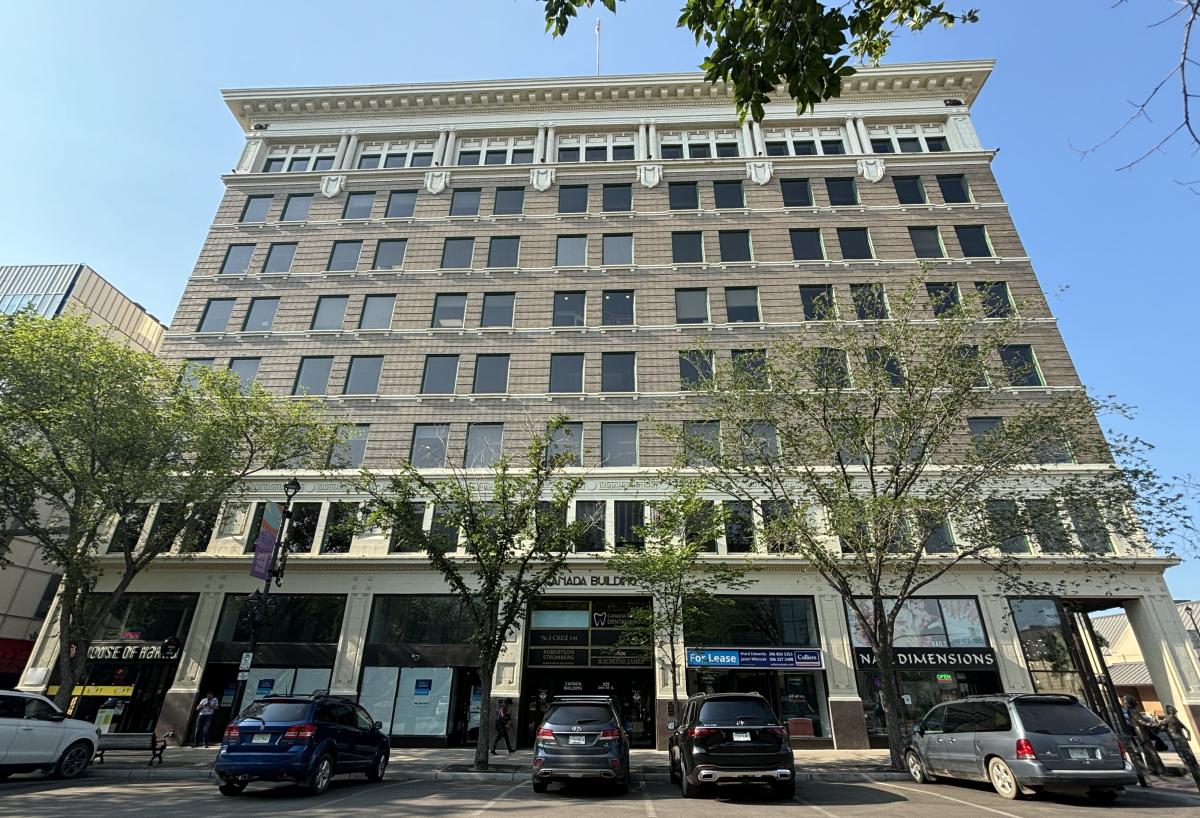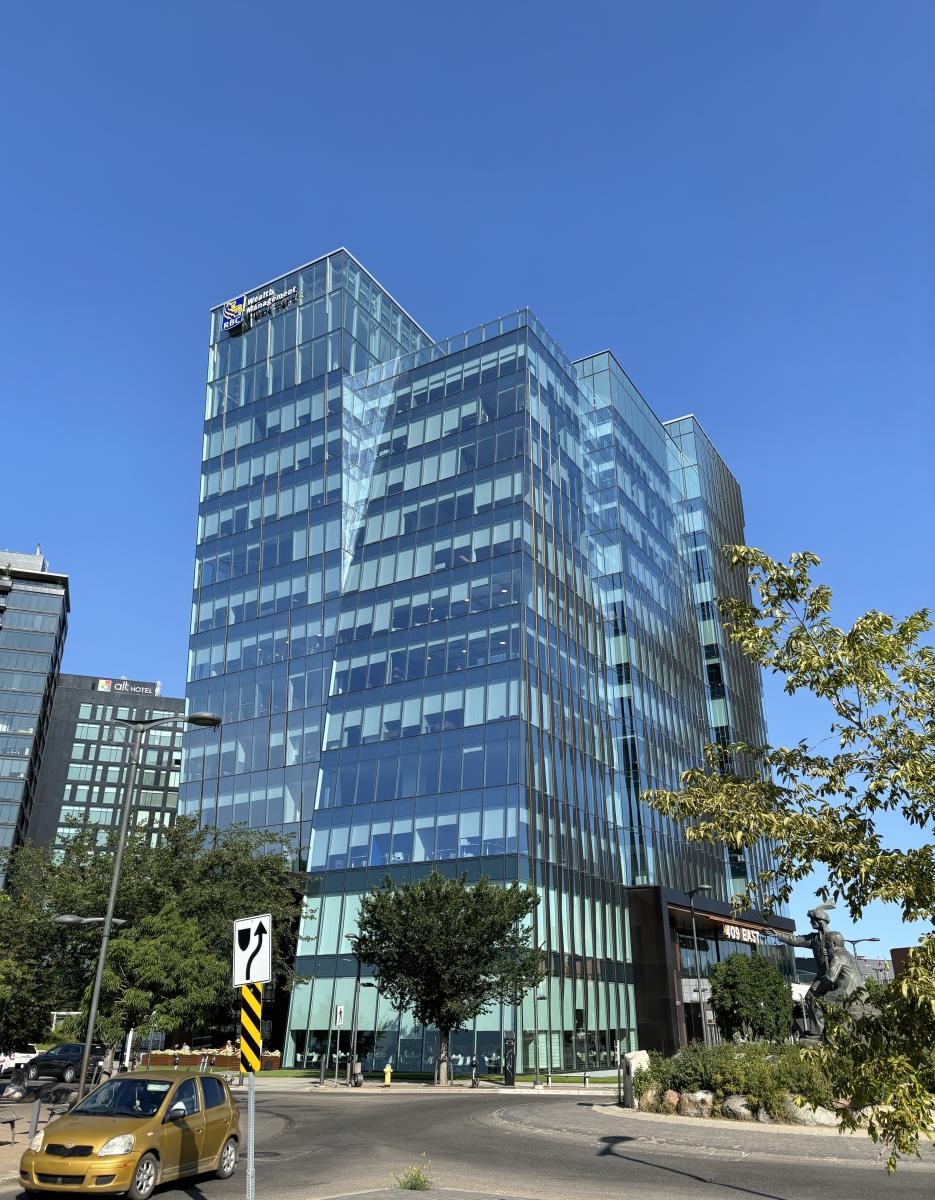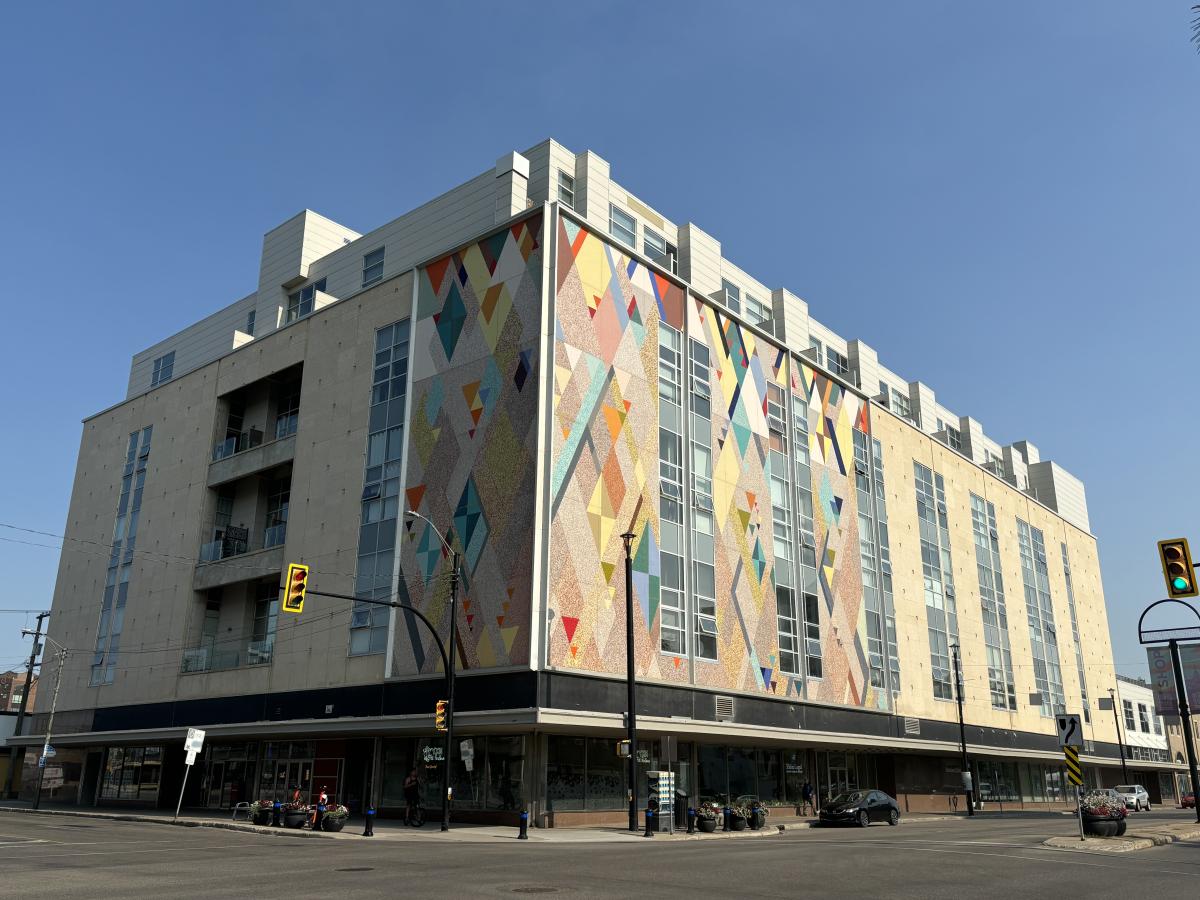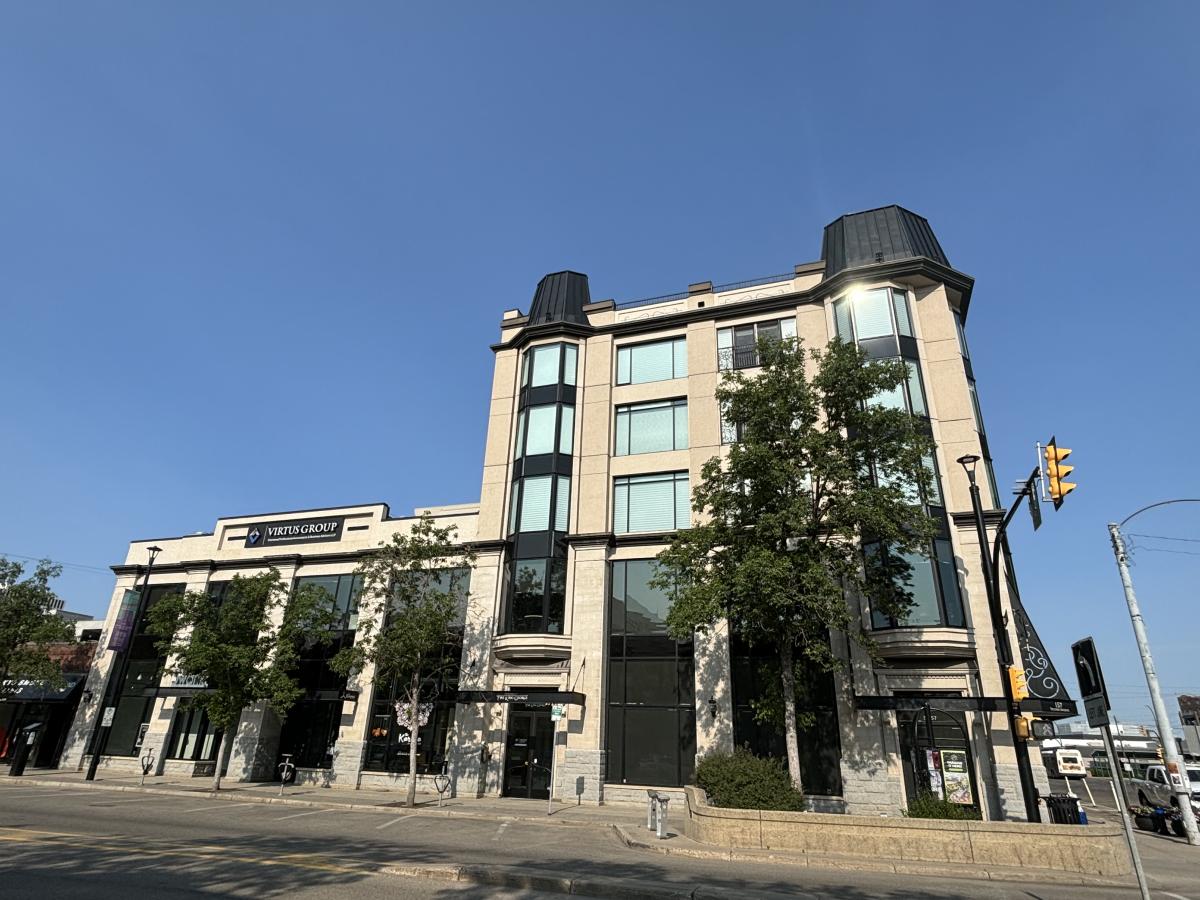This section outlines new regulations proposed for Downtown surface parking lots in the B6, MX2, and M4 Districts.
Current State
Surface parking lots are permitted throughout most of Downtown, with around 50 sites dedicated to the land use. The map below shows where stand-alone parking lots are currently located.
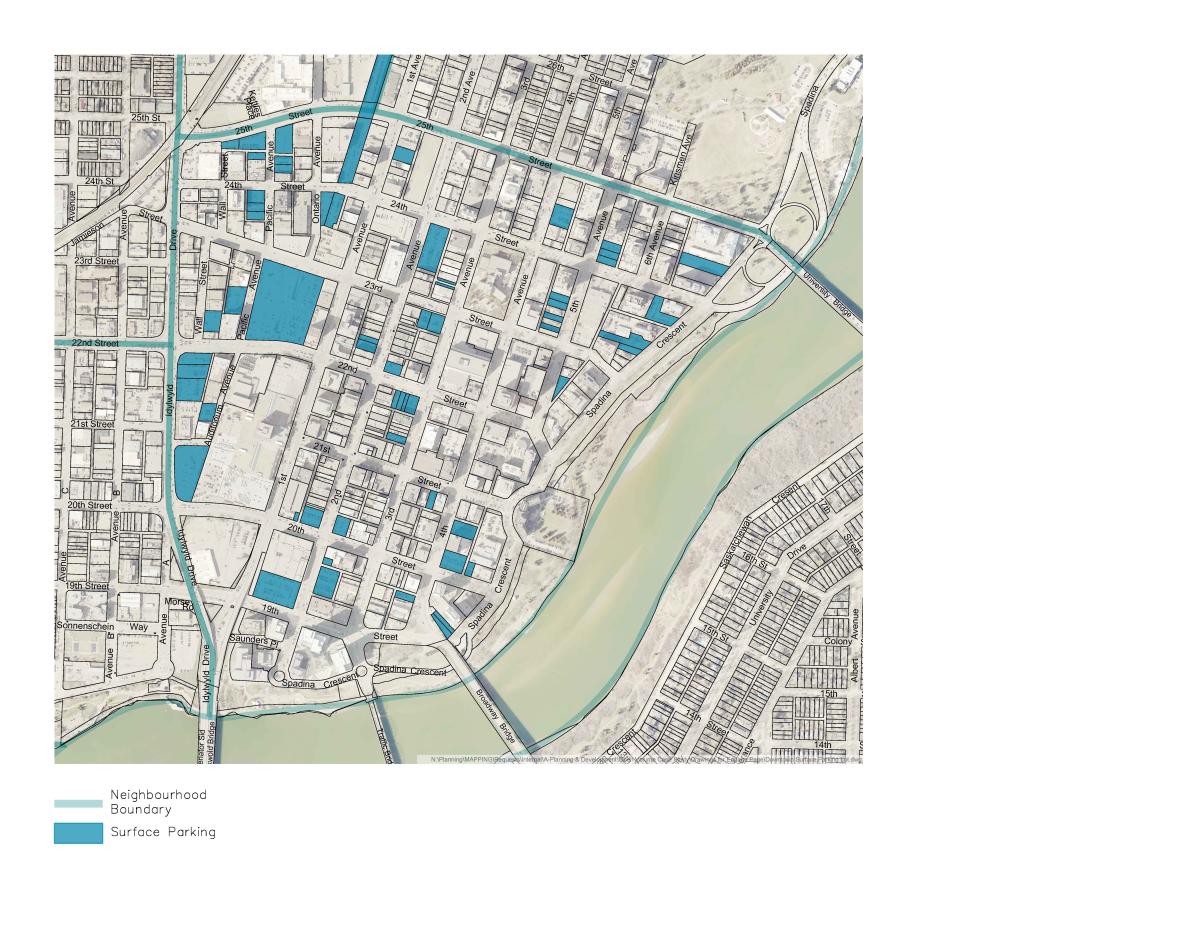
Many surface parking lots have existed for years with few, if any, improvements. While they are important to Downtown's parking supply, surface parking has a negative effect on the quality of the urban environment. They are generally not attractive and reduce street vibrancy, walkability, and perceptions of comfort and safety. This is especially the case for unimproved surface parking lots.
With work ongoing to revitalize Downtown Saskatoon, we need to look again at how to best regulate Downtown surface parking. With improved public facilities, the future rapid transit system, and improved mobility options, existing surface parking is intended to transition to more productive land uses over time.
Saskatoon is an outlier among similar Canadian cities for its lack of regulatory oversight of Downtown surface parking. The City Centre & District Plan includes direction to add more regulations for surface parking lots to the Downtown zoning districts and prohibit the creation of new surface parking lots in strategic locations.
New surface parking regulations will ensure that on a go-forward basis, surface parking is properly regulated to better fit into the Downtown urban environment.
Proposed Regulations
These regulations are proposed to apply to the B6 District, M4 District, and MX2 District.
The proposed regulations distinguish between "temporary" and "permanent" surface parking lots in the Downtown, provide for them as a discretionary use throughout most of the three zones, prohibit them in select areas, and establish new development standards (site improvement requirements).
New Land Use Definitions
- Temporary Surface Parking Lot means a commercial parking lot or parking station in a B6, M4, or MX2 district that is developed on an interim basis, is located at grade, is not located in a parking structure, and is the principal use of the site.
- Permanent Surface Parking Lot means a commercial parking lot or a parking station in a B6, M4, or MX2 district that is located at grade, is not located in a parking structure, and is the principal use of the site.
Discretionary and Prohibited Areas
Temporary and permanent surface parking as the principal use of a site is proposed to be made a discretionary use throughout the B6, M4, and MX2 zones, except where proposed as a prohibited use on sites fronting or adjacent to 21st Street East and 2nd Avenue between 19th Street and 25th Street. The proposed discretionary and prohibited areas are outlined on the map below.
Discretionary uses are land uses considered to be generally appropriate for a given zone but require further review by City Administration and consultation with the community. The discretionary use application process would ensure that any new surface parking lots are in line with broader Downtown development policies and community objectives. See Discretionary Use for more information on the process for discretionary forms of development.
The prohibited use area on 21st Street and 2nd Avenue sites is proposed due to the streets' importance to Downtown as noted in City policies and plans, and the importance of a pedestrian-oriented urban form on these streets.
Neither the discretionary use requirement or prohibited use area would apply to parking located within parking structures or surface parking that is not the principal use on a site (see "Accessory Surface Parking" below), which would continue to be permitted throughout these zones.
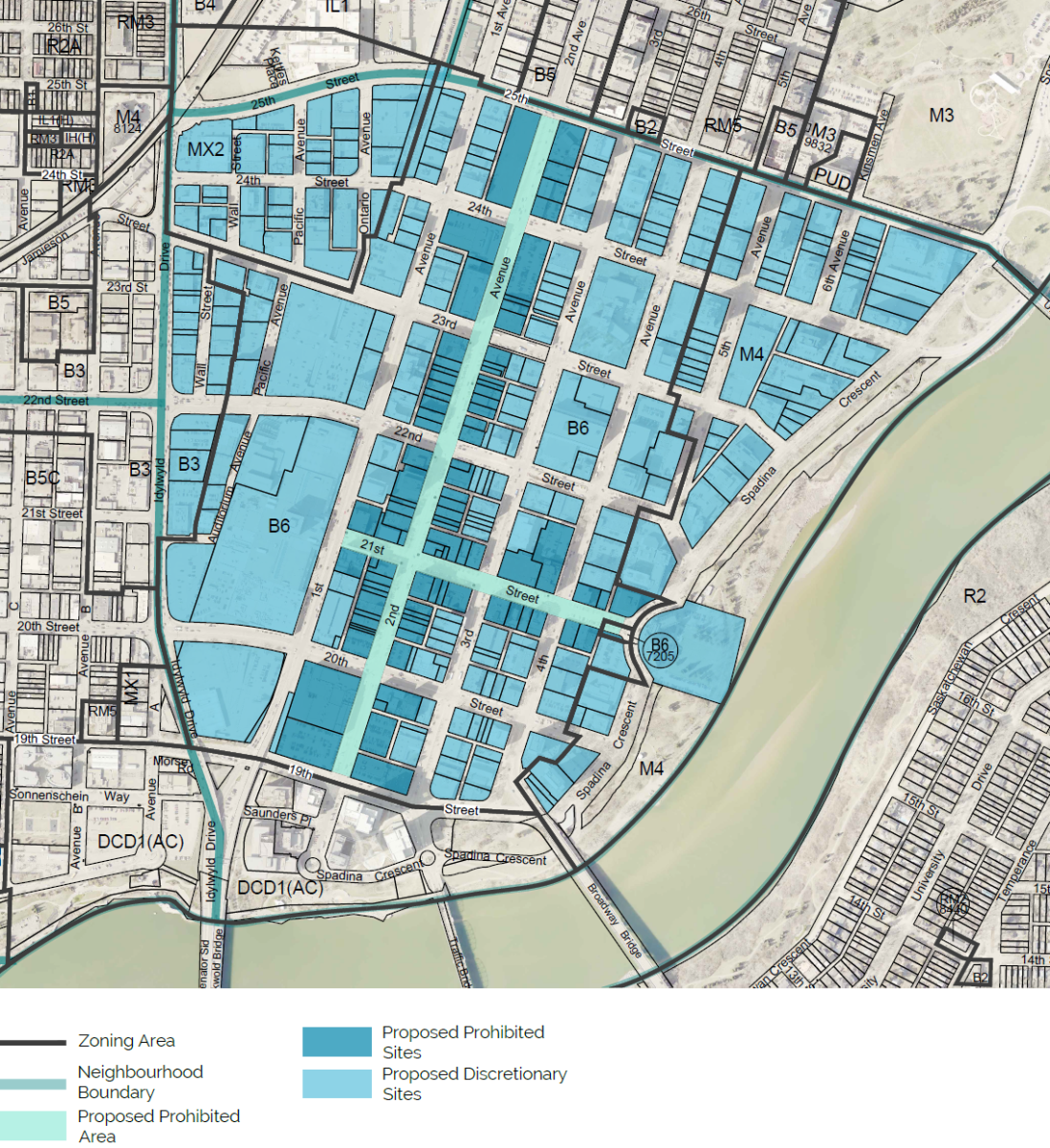
Temporary Surface Parking Lot
Where proposed as a discretionary use, a temporary surface parking lot would be subject to the below requirements through a discretionary use application.
This proposed land use facilitates an interim use of vacant land for surface parking prior to other development plans for the site advancing, which is not an option under current regulations. Given the temporary nature of this land use, requirements are intended to be lower and more straightforward than for a permanent lot. A decision on the application is to be made by City Administration based on compliance with technical requirements, not by City Council.
| Discretionary Use Application | - Approving authority: City Administration
- Approval term(s):
- 1st term: up to 4 years
- 2nd term: up to 2 years
- Following expiry of available approval terms, the temporary lot would need to cease operation and other development options for the site could be advanced, or transition to a permanent lot through a discretionary use application.
|
| Development Standards* | - Screening: minimum 1.0 metre (e.g. - wood plank fence along street-facing property lines)
- Hard surfacing: not required
- Landscaping: not required
|
| Submission Requirements | - Site plan
- Development concept/indication of future plans for the site
- Other requirements as identified
|
* Only zoning requirements are noted here. Additional technical requirements from other City departments may apply (i.e. - stormwater management, driveway crossing approval, etc.).
Permanent Surface Parking Lot
Where proposed as a discretionary use, a permanent surface parking lot would be subject to the below requirements through a discretionary use application.
This proposed land use facilitates surface parking that is intended to be permanent in nature. As such, expectations for site improvements are higher than for a temporary lot. A decision on the application by City Council is required to ensure alignment with Downtown development policies and objectives.
| Discretionary Use Application | - Approving authority: City Council
- Approval term: Indefinite
|
| Development Standards* | - Screening: minimum 1.0 metre (e.g. - wood plank fence along street-facing property lines)
- Hard surfacing: required
- Landscaping: 3.0 metre strip along street frontage; 1.5 m along flanking street on corner sites (see Landscaping Standards below)
|
| Landscaping Standards | - Maximum 50% hard landscaping elements (non-vegetative materials such as concrete, unit pavers, brick pavers or tile), except in M4 District where grass boulevards and lawns are more prevalent and the maximum shall be 25%.
- Minimum 50% soft landscaping elements (vegetation such as trees, shrubs, vines, hedges, flowers, ornamental grasses lawn and ground cover).
- Landscaping can be distributed along street-facing property lines in a flexible manner rather than having to be a rectangular strip, provided that the overall landscaped area is equivalent to what is required. This is intended to provide flexibility for site layouts and allow for larger landscaping nodes at street corners or where growing conditions are better. With the increase in permitted hard landscaping elements, these nodes could have benches or other pedestrian-oriented elements.
- Landscape plan to be endorsed by a registered landscape architect to ensure plantings are viable in a downtown growing environment.
|
| Submission Requirements | - Site plan and landscape plan
- Demonstrate demand/justification for permanent surface parking lot
- Other requirements as identified
|
* Only zoning requirements are noted here. Additional technical requirements from other City departments may apply (i.e. - stormwater management, driveway crossing approval, etc.).
Accessory Surface Parking
Surface parking that is accessory to another principal use on the same site (e.g. - an office building) will remain permitted throughout Downtown as it is today, but with the addition of landscaping being required between these parking areas and street-facing property lines to enhance the streetscape and provide some separation between the sidewalk and parked vehicles.
| Development Standards | - Screening: minimum 1.0 metre (no change from existing regulations)
- Landscaping: 3.0 metre strip along street frontage; 1.5 m along flanking street on corner sites.
|
| Landscaping Standards | - Same as for permanent surface parking lot - see above.
|
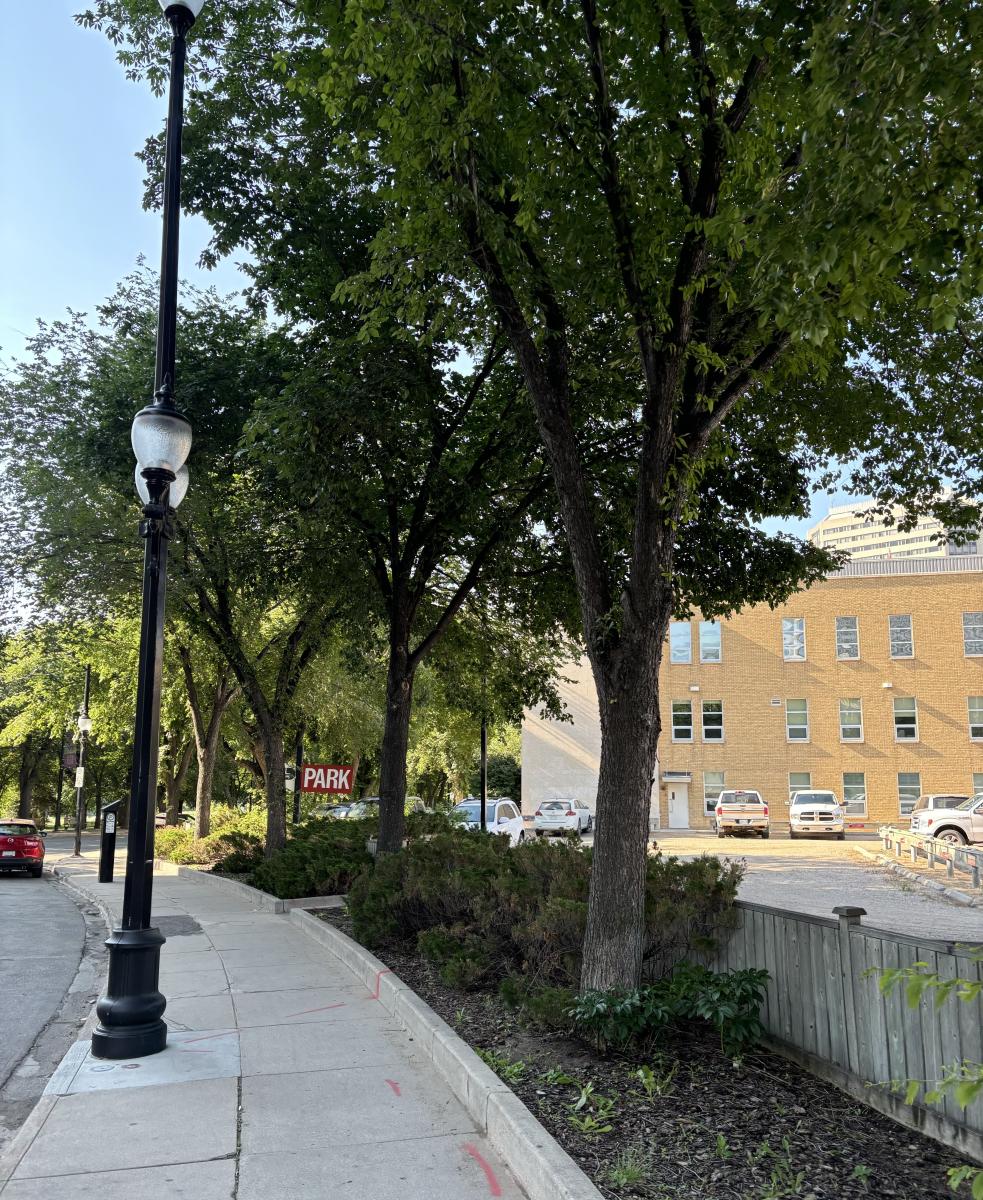
Existing Surface Parking Lots
New regulations for Downtown surface parking are intended to establish a new regulatory approach for surface parking that is proposed in the future. However, existing surface parking lots may be impacted by the regulations based on their legal status:
- Those that are approved uses and are legally existing prior to adoption of the new regulations would become non-conforming after the change and may continue operating in their current form. Any future expansion of legally existing surface parking lots would be subject to the new regulations. The continuation of and changes to non-conforming uses are regulated by Sections 88-93 of The Planning and Development Act, 2007.
- Those that are not approved and are illegal under current regulations would remain illegal under the new regulations if no prior action is taken. Illegal lots could apply for a discretionary use application to achieve compliance under the new regulations, except in the prohibited area where a path to legal status would not exist after the proposed regulations take effect.
